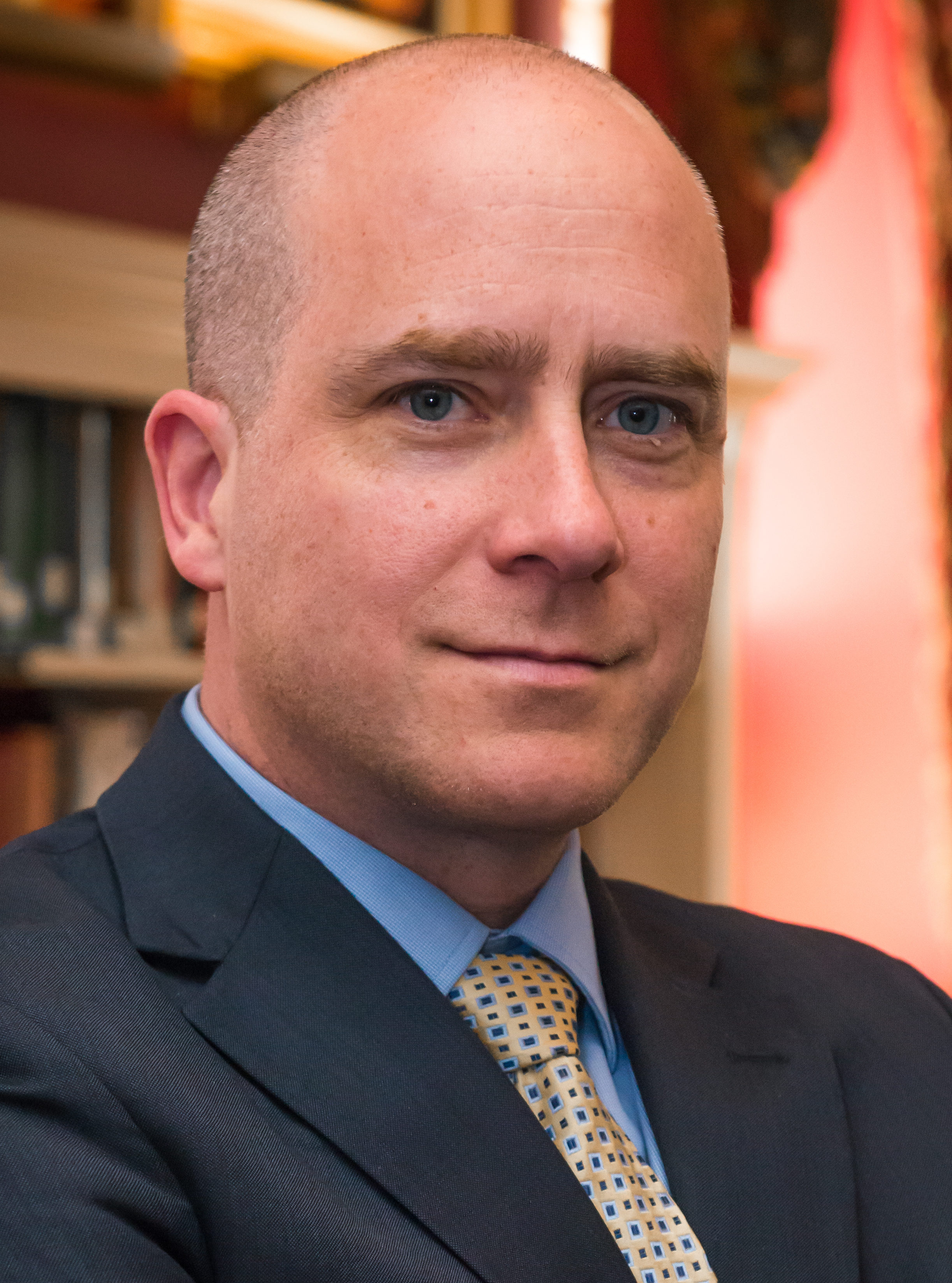Earlier this week, the day before she endorsed Donald Trump for president, former Alaska governor Sarah Palin’s son, 26-year-old combat veteran Track Palin, was arrested and charged in a domestic violence case with possession of a firearm while intoxicated and with battery against his girlfriend. During a speech in Oklahoma on Wednesday, the governor linked her son’s deployment with his arrest. “Our wounded warriors,” she said, “come home from the battlefield bringing new battles with them.”
Palin continued:
Our wounded warriors, sometimes in body and in mind, come back different than when they left for the war zone…It’s kind of like the elephant in the room because my own family going through what we’re going through today with my son, a combat vet…like so many others, they come back a bit different. They come hardened…[feeling] the ramifications of some PTSD and…woundedness.
Since then, Palin has come under criticism from veterans and veterans support groups for her comments. Some have lamented her taking a crisis like Post-(combat)-Traumatic Stress Disorder (PTSD) and spinning it into a partisan attack – she arguably blamed her son’s condition on President Obama for his lack of support for veterans. But others have been frustrated simply by her seeming to draw such an overly-determined line between combat and anti-social behavior.
This post is not about whether Track Palin’s actions are a result of his PTSD – I have no idea and am not qualified to assess. Nor is it about Obama’s competencies as Commander-in-Chief (if you want to know how I feel, just read more of what I write or buy me a pint and let’s talk). Instead, it’s an introductory comment on what might be the only upside to something like this – the prompting of a conversation that needs to be had. PTSD is a true story. It needs to be talked about – without guile and with care, precision, and grace.
But first, a primer: what is PTSD?
It was only in 1980 that the American Psychological Association began to officially recognize PTSD. Nevertheless, the world has long-known that the trauma of combat can have decimating psychological effects. The ancients certainly knew. The Greek historian Herodotus records the tale of Epizelus, an Athenian warrior in the routing of the Persians at Marathon. Fighting bravely in the thick of the battle, he was suddenly struck blind despite being entirely untouched. Epizelus’ eyesight failed him when a gigantic Persian warrior – so large his body cast a shadow over the whole of the Athenian’s shield – moved through the tumult and made straight at him. But Epizelus was spared the giant’s lethal attention when, “the ghostly semblance passed by him, and slew the man at his side.” The blindness, however, remained. In the contemporary clinical literature, such conditions are known as “conversion disorders” and are represented by numerous, well-documented accounts of warfighters suffering neurological symptoms such as blindness, deafness, or paralysis – but without a definable organic cause.
Of course, functional disabilities are not the only consequence of the emotional turmoil of combat. Military physicians across the ages have recorded conditions characterized by melancholy and depression, incessant thinking of home, disturbed sleep or insomnia, loss of appetite, anxiety, anger, emotional numbing, paranoia, cardiac palpitations, stupor, and fever. The names given to such conditions have shifted with time and location, including: nostalgia; heimweh, the attribution of psychic wounds to homesickness; and estar roto, or brokenness. At other times it has been known as Da Costa’s syndrome, a psychosomatic disorder identified in the Civil War and presenting as heart disease despite the absence of any physiological abnormalities, known alternatively as cardiac neurosis, chronic asthenia, effort syndrome, neurocirculatory asthenia, or, more simply – soldier’s heart. Other names have been given as well: shell shock, from the belief that the concussion of exploding artillery disrupted the physiology of the brain; battle fatigue; war neurosis, Freud’s postulation that the injury is caused by a conflict between a soldier’s war ego and their peace ego, and, perhaps most enduringly, post-Vietnam syndrome.
The modern understanding of PTSD dates from the 1970s, largely out of the continuing psychiatric work precisely with veterans of the war in Vietnam. Refinement of the PTSD diagnostic criteria is ongoing and highly specialized, if sometimes controversial, and it has undergone numerous revisions. It’s enough to note here that PTSD is a broadly defined mental health disorder displaying a menu of symptoms or symptom clusters that include, indeed emerge from, exposure to, either by directly experiencing or witnessing, a particular kind of traumatic event, typically life threatening and of such intensity that it results in stressors outside the range of usual human experience. This gives PTSD a unique status among other psychiatric diagnoses in that the PTSD construct stipulates the etiological agent occurs outside the sufferer as opposed to from within; that is: PTSD cannot be diagnosed without the known presence of a traumatic event in the patient’s history. This marks a difference. While PTSD and earlier diagnoses such as shell shock or nostalgia describe common symptoms – detachment, hypervigilance, fear, anger – the older diagnoses often attributed these symptoms to character flaws or internal weakness. Two things should now be noted.
First, the advent of the PTSD diagnosis does not thereby make a psychiatric casualty of every soldier who displays fear in combat. Even General Patton, despite the infamous occasions in which he slapped and berated as cowards hospitalized soldiers who were possibly suffering from PTSD, also acknowledged in a letter to his son that every soldier feels timid before every fight. PTSD does not dismiss fear as a normal reaction to terrifying things. It does however complicate Patton’s further claim that a coward is the one who allows his timidity to get the better of his manhood.
Courage or cowardice is not always simply a matter of the will. The PTSD diagnosis suggests this in part after observing, over several decades, that the human nervous system’s constellation of reflexive survival responses can in certain circumstances become dysregulated; and that chronic dysregulation can result in anatomical and neurochemical abnormalities to the brain. In combat these abnormalities are often salutary and, as the philosopher Nancy Sherman writes, serve as part of a soldier’s “exquisitely honed reflexes and observational skills: soldiers…on hyper-alert can run to take cover at sudden loud noises or swerve fast off the road to avoid surface irregularities that downrange mark implanted bombs.”
Of course, the same neurochemical changes that enhance our combat skills in one moment can lead to psychic breakdowns in others. It is not clear that sheer willpower – or courage – is enough to overcome this. Moreover, such involuntary neuro-adaptations, however useful in combat, are, as Govern Palin rightly observes, particularly unsuited for life at home and, if unable to recalibrate, eventuate in no small set of challenges. PTSD – as well as moral injury, a proposed but contested subset that emerges not from life-threat trauma but from moral-trauma – can lead peritraumatic dissociation, including memory loss, emotional numbing, reduced awareness of one’s surroundings; functional impairment; uncontrollable rage and violent behavior; alcohol abuse; and, therefore, marital and other relationship problems; violations of the law; frequent job turnover; excessive risk-taking; and suicide.
Moreover, while exposure to a traumatic event is necessary for the development of PTSD, obviously not all soldiers who experience a traumatic episode – including the same traumatic episode – develop it. Therefore one body of research looks beyond the immediate stressor in order to determine the critical components of PTSD pathogenesis, or origins. What has been so far understood is, not surprisingly, complicated. While PTSD seems clearly to be a failure to recover from the normal and expected effects of serious trauma, the reasons for this failure have to do with individual differences between persons that include conditions both genetic, or internal, as well as epigenetic, that is external or environmental.
Said simply: PTSD involves both nature and nurture, broadly understood, and certain people appear more prone to suffer it than others.
In any case, PTSD is not something, pace Old Blood and Guts, one can simply have slapped out of them. Governor Palin is correct to see a line between combat abroad and belligerence at home. Numerous studies, including one by the American Psychological Association and another by the Naval Health Research Center strongly attest to this. The human condition is profoundly complex. We are neither spirit nor body alone. The chemical, neurological, and other physical properties and activities of our bodies affect our moods, dispositions, appetites, ability to reason, and, therefore, have a tremendous influence on how we act.
But while there might be a line between having been in combat and the propensity to beat the daylights out of those we love, it is not an indelible line. Nate Bethea, a former U.S. Army Ranger who served in multiple combat deployments, has been getting a lot of attention for a series of important tweets revealing his own experience with PTSD. Bethea describes an episode in which he found himself caught in the middle of a heated argument, feeling completely out of control. Afterward, he went home, got lit, and did a little dope. Waking up the next day feeling awful, he went outdoors to walk it all off. Despite still spinning barely-in-control and despite feeling hostile toward everyone he saw, he was nevertheless able to recognize certain symptoms and get himself home without having dropped anybody. “Here’s the point of this,” Behtea writes, “at no point did I lash out at anyone, because that would have made me feel worse.” He is very careful not to presume omniscience regarding what Track Palin may be dealing with but, he nevertheless insists, “There’s no explaining away personal responsibility.”
Our culture today is very quick to do away with such antiquated ideas as personal responsibility. Jean Bethke Elshtain, the late political theorist who took very seriously the challenges facing our nation’s warfighters, insisted we needed to stop turning sin into syndromes. Not every personal defect or weakness is attributable, or completely attributable, to a psychological condition, though our society seems increasingly prone to believe so – just witness a recent University of Chicago study suggesting road rage may be caused by a neurological disorder. Again, just as with PTSD, there surely are conditions that render it more difficult, sometimes nearly impossible, for some people, in certain circumstances, to act responsibly but, just as surely, sometimes we are too quick to allow partial challenges to turn into total justifications and, at other times, we forget that a jackass may simply be a jackass.
Phil Klay, author of Redeployment, an extraordinary collection of short stories drawn from his own and other’s wartime experiences, warns against letting PTSD shift from a genuine diagnosis into a kind of shorthand to describe a cluster of feelings, dissatisfactions, emotions, or frustrations that might lead many to presume that all veterans are “in some ill-defined way, broken.” Importantly, Klay insists we mustn’t let pity avoid the complexity of real experiences in favor of our own favorite narratives. Like the 18th Century revivalist preacher and theologian Jonathan Edwards, who cautioned that pity tends to reduce – and therefore misrepresent – a person to simply a sum of their suffering, Klay finds it deeply unsettling that folks most often only ask about the worst things that happen in war.
Doing so, reducing someone to PTSD, or the hardships they face, or making excuses for their behavior, takes away the responsibility we have in seeing both the conditions of the world and people in their totality. Observe how Klay reflects upon a particular Marine, Clay Hunt, who served two deployments in Iraq, provided relief efforts after earthquakes in Chile and Haiti, who worked on behalf of wounded veterans, and whose personal battles led to suicide. Despite the tragic ending and the unimaginable personal struggles that must have led to it, Klay insists, “I find it difficult to pity someone who, when his life is considered in its totality, achieved so much good and touched so many people.”
War, Klay concludes, “subjects some of its participants to more than any person can bear, and it destroys them. War makes others stronger. For most of us, it leaves a complex legacy.”
It is a complexity that won’t be alleviated with undisciplined rhetoric at a campaign rally. Nor, of course, with a blog post. But it is a complexity worth talking about – now and in the times to come.






